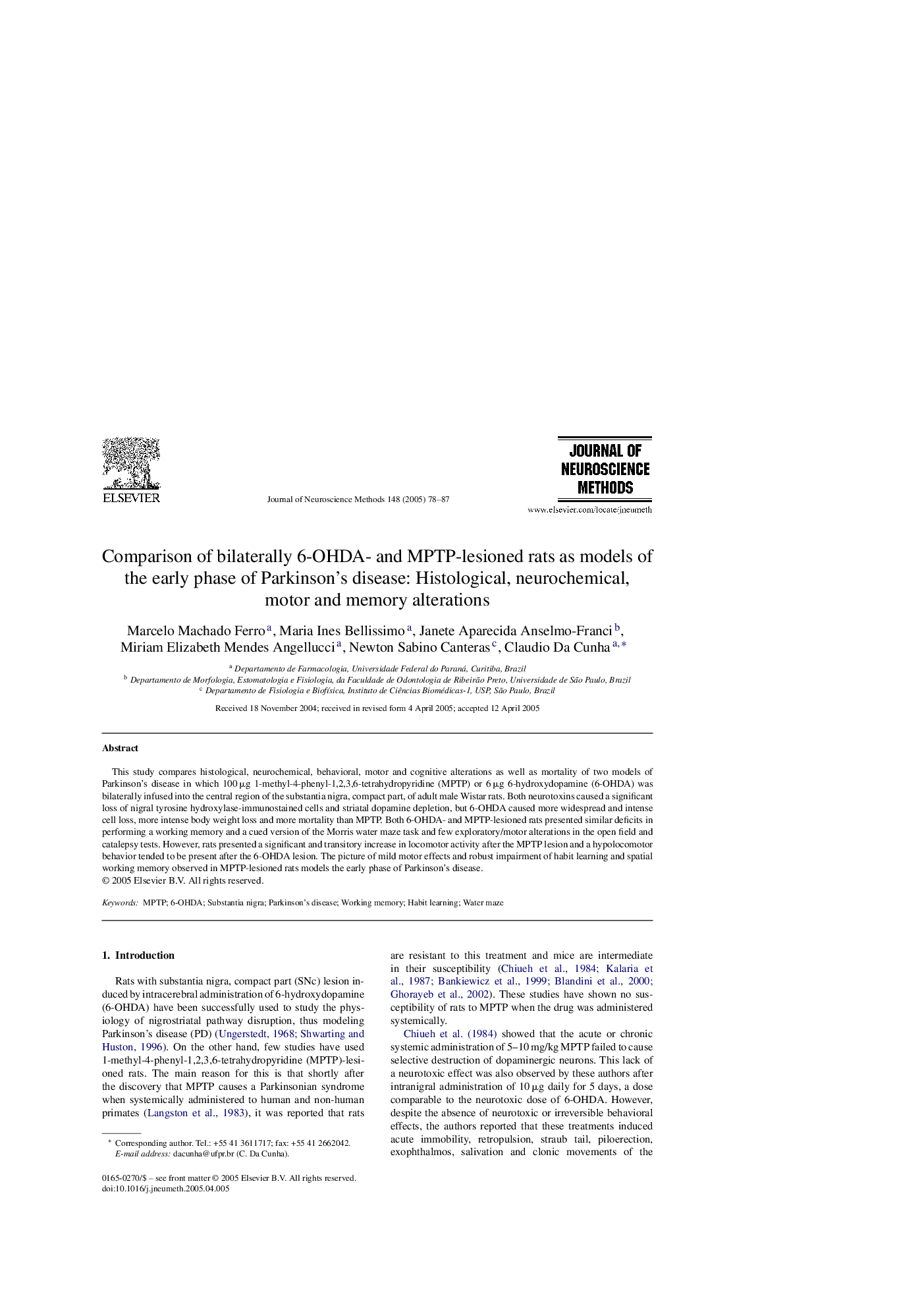| Article ID | Journal | Published Year | Pages | File Type |
|---|---|---|---|---|
| 9424099 | Journal of Neuroscience Methods | 2005 | 10 Pages |
Abstract
This study compares histological, neurochemical, behavioral, motor and cognitive alterations as well as mortality of two models of Parkinson's disease in which 100 μg 1-methyl-4-phenyl-1,2,3,6-tetrahydropyridine (MPTP) or 6 μg 6-hydroxydopamine (6-OHDA) was bilaterally infused into the central region of the substantia nigra, compact part, of adult male Wistar rats. Both neurotoxins caused a significant loss of nigral tyrosine hydroxylase-immunostained cells and striatal dopamine depletion, but 6-OHDA caused more widespread and intense cell loss, more intense body weight loss and more mortality than MPTP. Both 6-OHDA- and MPTP-lesioned rats presented similar deficits in performing a working memory and a cued version of the Morris water maze task and few exploratory/motor alterations in the open field and catalepsy tests. However, rats presented a significant and transitory increase in locomotor activity after the MPTP lesion and a hypolocomotor behavior tended to be present after the 6-OHDA lesion. The picture of mild motor effects and robust impairment of habit learning and spatial working memory observed in MPTP-lesioned rats models the early phase of Parkinson's disease.
Related Topics
Life Sciences
Neuroscience
Neuroscience (General)
Authors
Marcelo Machado Ferro, Maria Ines Bellissimo, Janete Aparecida Anselmo-Franci, Miriam Elizabeth Mendes Angellucci, Newton Sabino Canteras, Claudio Da Cunha,
